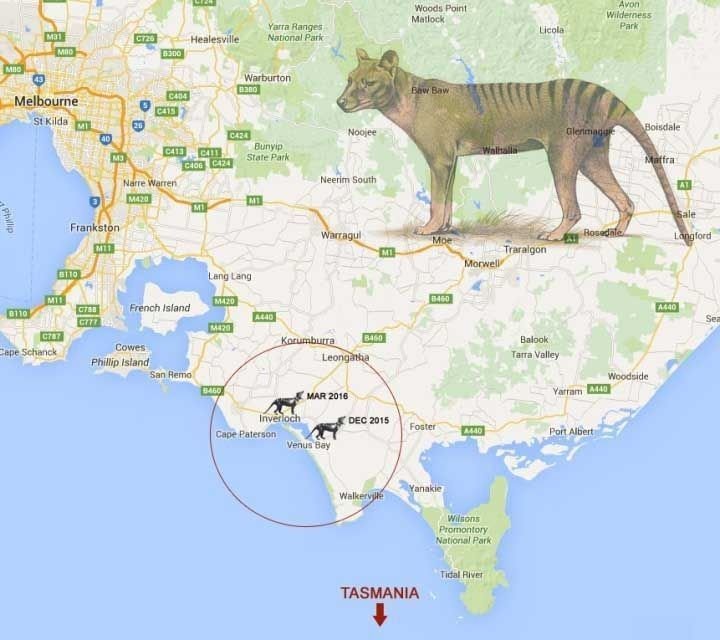DD Animal News – The Tasmanian tiger, also known as the thylacine, has been extinct, with the last one dying in captivity in 1936 … but it looks like a comeback may be coming in the future. In a headline-grabbing breakthrough, researchers have successfully mapped the entire genome of this legendary marsupial predator, opening the door to what might become one of the wildest comeback stories in history.
This scientific tale is the result of a collaboration between Colossal Bioscience, a U.S. biotech company, and the University of Melbourne. With a full genetic blueprint now unlocked, scientists believe the thylacine could return to the wild.
All the Code, Nose to Tail

The last thylacine died in captivity in 1936. However, new research and genome mapping could lead to a re-emergence of the species in as little as eight years.
“We’ve been able to sequence the entire thylacine genome now, absolutely every single bit of code from one end to the other,” said Professor Andrew Pask, lead scientist. “We’ve been able to make the first really key stem cells that we can do this whole genetic engineering process that we need to recreate the thylacine.”
The team has created the first key stem cells needed for cloning and genetic engineering. These cells could one day become living thylacines, rebuilt strand by strand.
More Than Just a Marsupial

To the people of Tasmania, the thylacine isn’t just a ghost of the past—it’s part of their identity. From cave paintings to old photographs to island folklore, this striped predator left deep pawprints in the region’s culture.
Some locals even claim to have spotted thylacines long after they were declared extinct. Whether those stories are fact or folklore, hope has never fully disappeared—and now, science is finally catching up with belief. The loss of an apex predator in a habitat can throw an ecosystem off balance and decrease stability, the thylacine could help create a more diverse ecosystem in Tasmania.
Past Greatness
The Tasmanian tiger, also known as the thylacine, resembled a dog with black stripes along its back and yellowish fur. It was a marsupial, meaning it carried its young in a pouch. While thylacines disappeared from mainland Australia around 2,000 years ago, they survived in Tasmania until the 20th century.
According to Live Science, human activity played a major role in the species’ extinction. After British settlers arrived in Tasmania, they frequently hunted thylacines out of fear that the animals would attack their livestock. Although there have been unconfirmed sightings over the years, the last documented thylacine died in captivity at the Beaumaris Zoo in Hobart in 1936. The species was officially declared extinct in 1982.
Rewilding: Big Hopes, Big Questions
If the revival moves forward, it won’t be as simple as copy and pasting the genome into nature. There’s still a long walk ahead dealing with gestation challenges, ecological readiness, and finding a suitable surrogate species.
Still, this isn’t just about bringing back a single species—it’s about rethinking extinction, conservation, and whether science can (or should) undo the past.
For now, the stripes remain in the lab. But if these scientists succeed, the wilds of Tasmania could one day echo again with the soft patter of paws that haven’t touched Earth in nearly a century.






